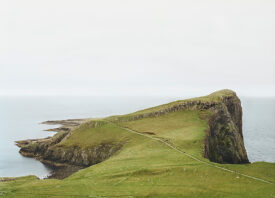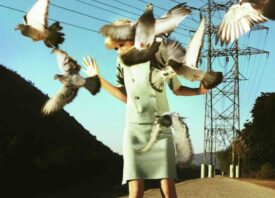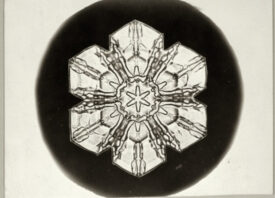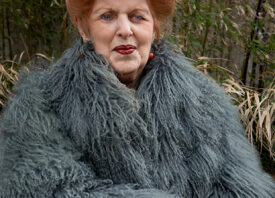Search this site
‘Stage Fright’ by Jan Adriaans
Netherlands-based artist Jan Adriaans‘ work is photography based, though his final pieces vary between video, ‘classic’ photographic works, and sculptures, within which he explores the relationship between materials, objects and space while testing the boundaries and limitations of the medium itself. We recently talked to Adriaans about his latest series Stage Fright.
You seem to find the perfect place or environment to take your photographs. Is this accidental or do you search for just the right spot with a certain image in mind?
“I start with creating a certain framework of thought. In this case it was ‘the aspects of a stage’. A stage represents a complex dynamic, first concealing and later revealing a spectacle, heightening the sense of anticipation for the act to come—it’s a spot for failure or success. I was searching for locations where that thin layer of glamour is presented gloriously, and therefore I went to Las Vegas, a well-constructed mirage in the desert of Nevada.
“During my process I decide which pictures best fit the idea. In the photos, I leave parts of construction or mistakes visible—this instability in the picture questions the intensions of the architecture. When I came back to Holland I responded to my Las Vegas experiences by making new photos and sculptures in my studio, creating self-made settings and objects with a certain danger to them. The process of making is a combination of observing, interfering and constructing.”
Stage Fright feels surreal, caught between dream and reality. Can you tell us a bit more about the series?
“Las Vegas makes you feel like you’re in a very manipulative environment by its complex combination of architectural elements, climate control and precise routing. People are lead from one sensation to the other in order to consume and to gamble. The choice of styles is interesting—the style of the interior of Caesars Palace is kind of Etruscan, while the design of the patio is inspired by the Trevi fountain of Bernini. Also the lightning is important. According to Robert Venturi in ‘Learning from Las Vegas’ you find that inside the hotels and casinos that “time is limitless, because the artificial light obscures rather then defines its boundaries. Light is not used to define space, it is anti-architectural. Space is enclosed but limitless, because the edges are dark.” I think the pictures also carry that sense of reality and dreaminess. But if you look closer you see it’s all constructed, fake and vulnerable”.
Your work in general consists of both photographic works and sculptures. In this series you add certain elements to the places you photograph. At which point in the process do you decide a work is a sculpture or photograph?
“One work leads to the other. Sometimes a failure can also lead to an idea for another work. I’m interested in this shifting of dimensions, so installations can have a physical (or spatial) appearance as well as a representation in a photograph. To understand better how these spots I encounter are designed, I interfere, to see what happens. A photo is a quite elusive medium for me, with a certain distance and mystique. An object can work as the link between the viewer and the architecture of the space where it’s presented, making you aware of where you are. I also use video and performance in my work. It’s a playful way of exploring within the framework. In the exhibition-space my aim is to make an arrangement where these works interact.”
This post was contributed by photographer Antje Peters.











